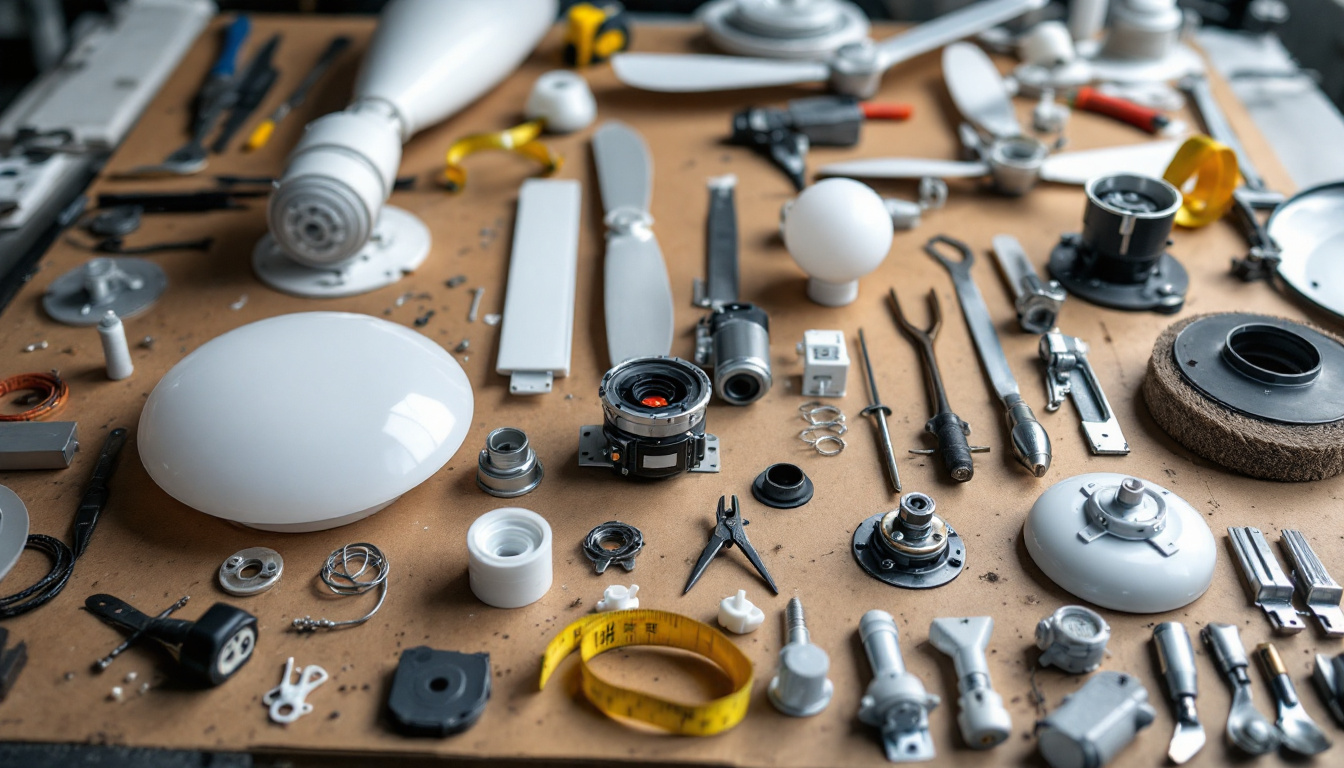
As the demand for stylish and functional lighting solutions continues to grow, floor lamps have become a popular choice for both residential and commercial spaces. However, for lighting contractors, the installation and selection of floor lamps can present a unique set of challenges. This guide aims to help lighting professionals avoid common mistakes when working with floor lamps, ensuring that their projects not only meet client expectations but also enhance the overall aesthetic of the space.
Floor lamps come in a variety of styles, each serving different purposes and aesthetics. Understanding these types is crucial for contractors to make informed decisions. Common types include arc lamps, torchiere lamps, and tripod lamps. Each design offers distinct lighting effects and can be used to create different atmospheres in a room.
Arc lamps, for instance, are ideal for providing overhead lighting without the need for ceiling fixtures. They can effectively illuminate a seating area while adding a modern touch. On the other hand, torchiere lamps direct light upwards, creating ambient light that can fill a room without being overly harsh. Tripod lamps, with their unique structure, can serve as both a functional light source and a statement piece. Beyond these, there are also floor lamps designed with adjustable heights or shades, allowing for customizable lighting solutions that can adapt to various activities, from reading to entertaining guests.
Moreover, some floor lamps incorporate additional features such as dimmers or smart technology, enabling users to control the brightness and even the color of the light through mobile apps or voice commands. This level of versatility not only enhances the functionality of the lamp but also allows homeowners to tailor their lighting to suit different moods and occasions, making floor lamps an essential element in modern interior design.
The choice of bulb is critical when it comes to floor lamps. LED bulbs are increasingly favored for their energy efficiency and longevity. However, contractors should also consider the color temperature of the bulbs, as this can significantly affect the ambiance of the space. Warmer tones create a cozy atmosphere, while cooler tones can enhance productivity in workspaces.
Additionally, the wattage of the bulb should align with the lamp’s design and intended use. A lamp designed for reading should have a higher wattage to provide adequate light, while decorative lamps may require softer lighting to maintain their aesthetic appeal. It’s also worth noting that the type of bulb can influence the overall design theme; for example, vintage-style Edison bulbs can add a rustic charm, while sleek, modern LED options can complement contemporary decor.
Furthermore, the placement of the bulb within the lamp can affect the quality of light emitted. Some lamps feature shades that diffuse light, creating a softer glow, while others may have exposed bulbs that provide a more direct and intense illumination. Understanding these nuances can help contractors and homeowners alike select the perfect combination of lamp and bulb to achieve their desired lighting effect, enhancing both functionality and style in their living spaces.
One of the most frequent mistakes made by lighting contractors is neglecting the scale and proportion of floor lamps in relation to the surrounding furniture and space. A large, imposing floor lamp can overwhelm a small room, while a petite lamp may get lost in a spacious area. It is essential to consider the overall dimensions of the room and the other elements within it.
When selecting a floor lamp, contractors should visualize how it will fit within the overall design scheme. Using design software or creating mock-ups can help in assessing the right scale. A well-proportioned lamp not only enhances the functionality of the lighting but also contributes to the aesthetic harmony of the space. Additionally, it’s crucial to take into account the height of the furniture and the ceiling. For example, a tall lamp might be ideal next to a high-backed sofa, while a shorter lamp could complement a low-profile chair. This attention to detail ensures that the lamp not only serves its purpose but also enhances the overall visual flow of the room.
Functionality is a key aspect that should never be overlooked. Floor lamps serve various purposes, from providing general illumination to creating specific focal points. Contractors must assess the intended use of the lamp in the space. For instance, a reading nook requires a lamp that provides focused light without glare, while a living area may benefit from a lamp that offers ambient lighting.
Furthermore, contractors should consider the lamp’s adjustability and versatility. Models that allow for height adjustments or have flexible arms can provide users with the ability to direct light where it is needed most. Ignoring these functional aspects can lead to dissatisfaction for clients, as the lamps may not meet their practical needs. It’s also worth noting that the type of bulb used can significantly affect functionality; LED bulbs offer energy efficiency and longevity, while incandescent bulbs provide a warm glow that may be preferred in cozy settings. By understanding the various lighting technologies available, contractors can better advise clients on the best options that align with their lifestyle and preferences, ensuring that the chosen floor lamp truly enhances the living experience in the space.
The placement of floor lamps is crucial for maximizing their effectiveness. A common mistake is placing lamps too far from seating areas, which can result in insufficient lighting for tasks such as reading or working. Ideally, lamps should be positioned within arm’s reach of seating to ensure easy access to switches and to provide adequate illumination.
In addition, considering the layout of the room is essential. Floor lamps can be used to create visual pathways or to highlight architectural features. Placing a lamp next to a piece of artwork or in a corner can draw attention to those areas, enhancing the overall design.
Another often-overlooked aspect of floor lamp installation is the proximity to electrical outlets. Contractors should always plan for the location of outlets when selecting and positioning floor lamps. Running extension cords can create safety hazards and detract from the aesthetic appeal of the space.
It is advisable to incorporate floor lamps into the overall electrical plan of the room. This may involve installing additional outlets or using lamps with built-in USB ports for added convenience. Proper planning can prevent future complications and ensure a seamless installation process.
Floor lamps should complement the overall design theme of the space. A common mistake is selecting lamps that clash with the existing decor. For example, a sleek, modern lamp may look out of place in a rustic or traditional setting. Contractors should take into account the materials, colors, and styles present in the room.
When selecting lamps, it can be helpful to create a mood board that includes the colors and textures of the space. This visual reference can guide the selection process and ensure that the chosen lamps enhance the overall aesthetic rather than detract from it.
The color and finish of a floor lamp can significantly impact the overall look of a room. Neutral finishes may blend seamlessly with various design themes, while bold colors can serve as statement pieces. Contractors should consider how the lamp’s color interacts with other elements in the room, such as wall colors, furniture, and accessories.
Moreover, the finish of the lamp—whether matte, glossy, or metallic—can affect the way light is reflected in the space. A lamp with a shiny finish may create more glare, while a matte finish can provide a softer light. Understanding these nuances can help contractors select the most appropriate lamp for their clients’ needs.
Safety is paramount when it comes to floor lamps, especially in homes with children or pets. A common mistake is selecting lamps that are not stable enough, which can lead to tipping and potential accidents. Contractors should choose lamps with a solid base and consider the height and weight of the lamp in relation to its design.
Additionally, it is important to ensure that the lamp’s cord is safely managed. Cords should be routed in a way that minimizes tripping hazards. Using cord covers or securing cords along walls can help maintain a safe environment.
Contractors must also be aware of any local electrical codes and safety standards that apply to lighting installations. This includes ensuring that all fixtures are properly grounded and that the wiring is up to code. Failing to comply with these regulations can lead to safety hazards and legal issues.
Staying informed about industry standards not only protects clients but also enhances the contractor’s reputation as a knowledgeable professional in the field. Regular training and updates on safety regulations are essential for maintaining compliance.
Lighting contractors play a vital role in enhancing the functionality and aesthetic appeal of spaces through the careful selection and installation of floor lamps. By avoiding common mistakes related to scale, functionality, placement, style, and safety, contractors can ensure that their projects meet client expectations and create inviting environments.
Ultimately, a well-chosen floor lamp can transform a space, providing both illumination and style. By understanding the nuances of floor lamp selection and installation, contractors can elevate their work and deliver exceptional results that stand the test of time.
Ready to elevate your lighting projects with the finest selection of floor lamps and more? Look no further than LumenWholesale, where we provide lighting contractors with high-quality, specification-grade lighting products at unbeatable wholesale prices. Say goodbye to local distributor markups and hello to a vast array of reliable lighting options that meet the highest industry standards. With free shipping on bulk orders, you can stock up on premium lighting solutions at the best value, ensuring every project shines without breaking the bank. Don’t compromise on quality or affordability—discover the best in wholesale lighting today and make your next installation a standout success.

Discover the essential guide to ceiling fan components tailored for lighting contractors.

Discover the best places to purchase light fixtures with our expert guide tailored for lighting contractors.

Discover essential tips and innovative techniques for lighting contractors to effectively utilize collapsible solar lamps in their projects.

Explore the critical role of industrial dryer outlets in enhancing efficiency and safety for lighting contractors.